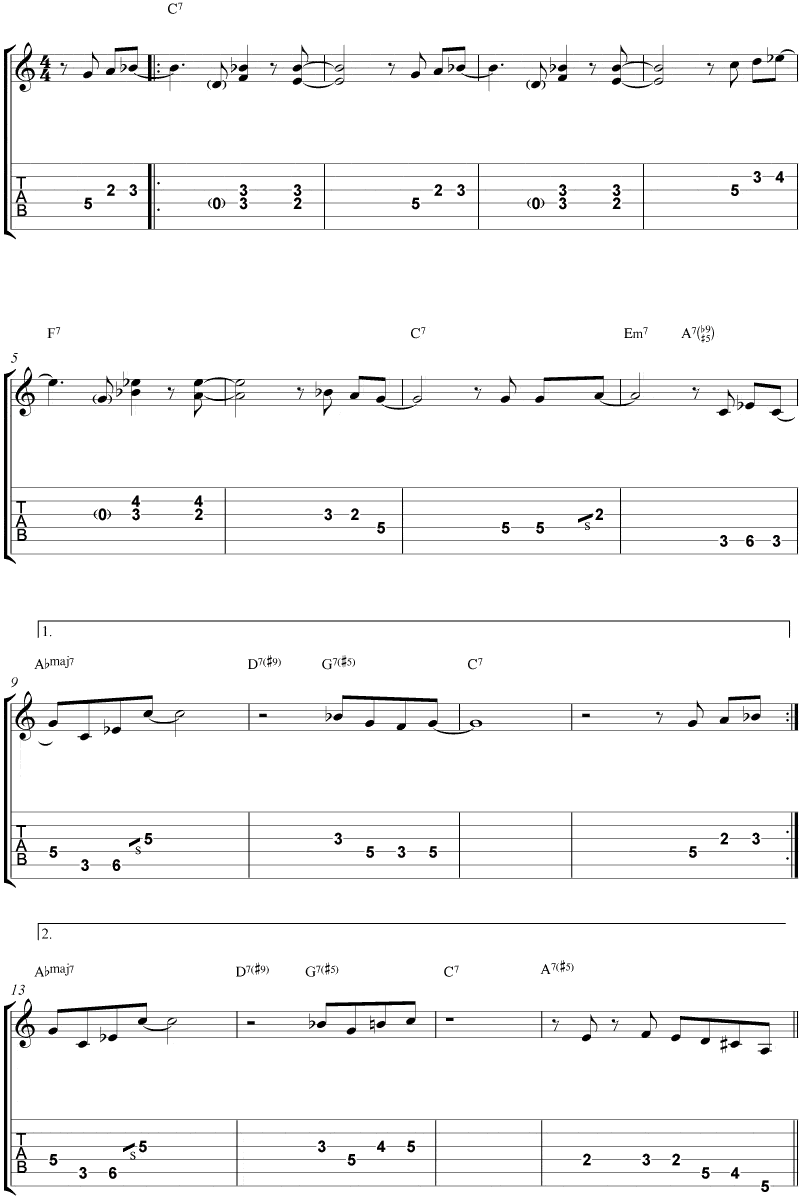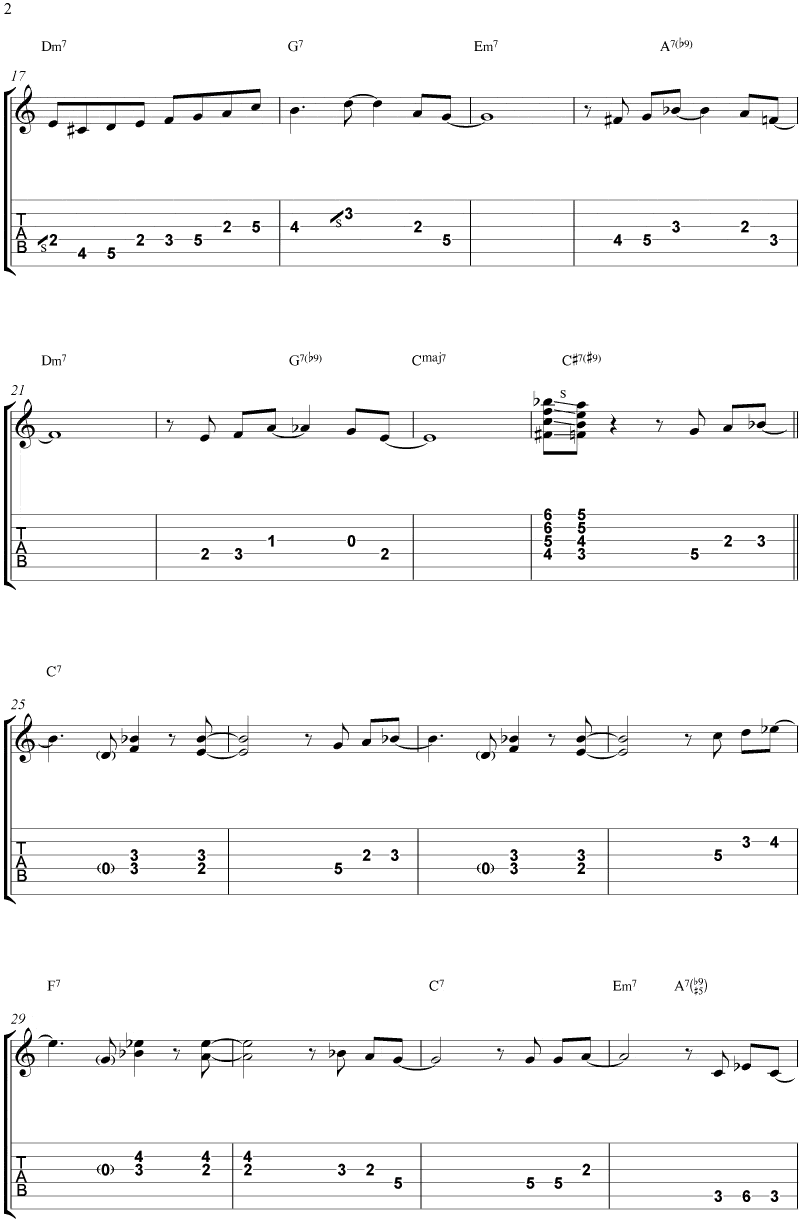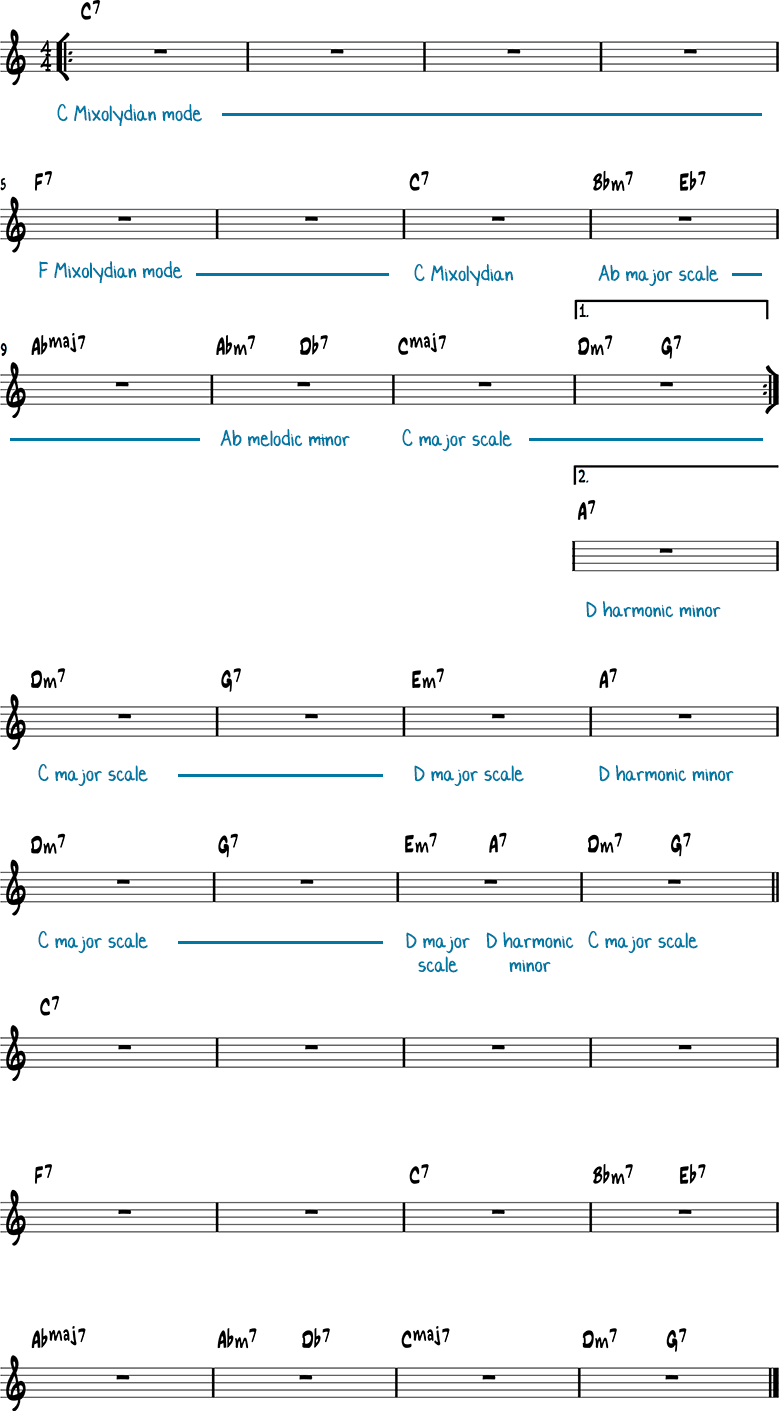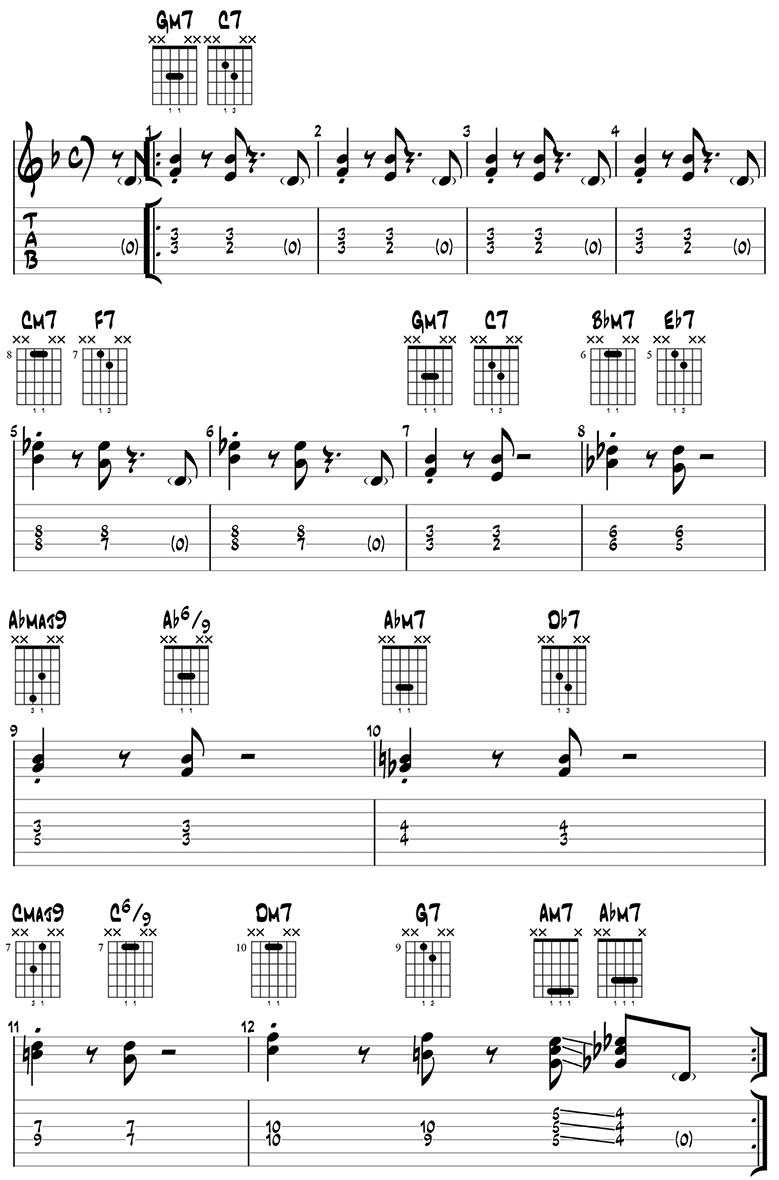Unit 7 is a great jazz standard composed by bass player Sam Jones during the time he was working with Cannonball Adderley. The most famous version of Unit 7 is on Wes Montgomery’s album “Smokin’ at the Half Note”. This album, which is essential listening for any jazz guitarist, was recorded live in 1965 with the rhythm section of Miles Davis (the Wynton Kelly Trio).
In this lesson, you will learn how to play the melody of Unit 7, how to comp the chords, and how to improvise over its form.
Unit 7 – The Melody
Backing Track
Listen & Play Along



Unit 7 – Analysis & Improvisation
Unit 7 is a 12-bar blues in C with a bridge, played in the AABA format.
During solos, the chord progression is a bit different compared to the chord progression of the theme.
Here are the chord changes that are used during the solo.

Bar 1 to 4
On the C7, you can play the C Mixolydian mode or the C minor or major blues scale.
Wes plays two counts of Gm7 and 2 counts of C7 in his comping here, adding the iim7 before the dominant chord.
Bar 5 and 6
Over the F7, you can play the F Mixolydian mode or the C minor blues scale.
Bar 8 and 9
A 2-5-1 chord progression in Ab major.
Bar 10
Db7 is the tritone substitute of G7, the dominant of Cmaj7.
Abm7 is the ii of that tritone substitute.
Here you can play the Ab melodic minor scale (=Db Lydian dominant scale).
Bar 24
An A7 chord to go to the Dm7 chord at the start of the bridge.
Here you can play the D harmonic minor scale or the A altered scale.
Unit 7 – Comping
After the theme, the piano solo begins while Wes does some light comping.
Because the piano plays chords as well, Wes has to comp very sparingly to not get in the way of the piano.
He does this by playing guide tone chords, also known as shell chords.



Wes often plays a tritone sub on bar 4 of the A sections of this tune. So that’s F#7 (or Bm) instead of C7/Gm. You get this hip sidestep sound going from F#7 to the F7 at bar 5. So cool…
What tempo is this and which Band in a Box style is being used?
Is the guitar solo tab to be found somewhere on the net ?
I was hoping for the same, Dirk?
Thanks. On the C7, I wouldn’t recommend approaching it as a blues player would (C mixolydian) but rather I’d think of it as a short Gm7-C7 vamp and play G dorian — same notes of course, but different chord tones, approach tones, etc. IMHO that sounds a lot more appropriate.
I just want to say that I have been playing guitar for over 45 years. I have played primarily blues & rock style most of that time and have made several attempts to get a handle on jazz playing and have given up in frustration each time…..Until I found these lessons. I am self-employed and don’t have the time to practice and play that I once did, but when I do find the time, I will be ordering more of these materials. The material, application of scales, breakdown into bite-sized chunks, the Tab and theory are all there for the taking. This what I have been looking for….for a long time. Can’t wait to find time to dig in….Thanks for what you are doing!!
So Good…
Thank you for wonderful lesson
Bit confused here !
In bar 10, I don’t get how an Abm7 can be the ii of Db7 ?
Tri-Tone substitutions – Abm7 – TT sub for Dm7 – Db7 – TT sub for G7 – leading to Cmaj9
I can’t believe I’m the first to express my gratitude for yet another superb lesson… it’s no wonder I haven’t finished my 3 ” easy guides” yet (arps, chords and chord melody).
Ongoing thanks to Matt and Dirk for running this fabulous website.